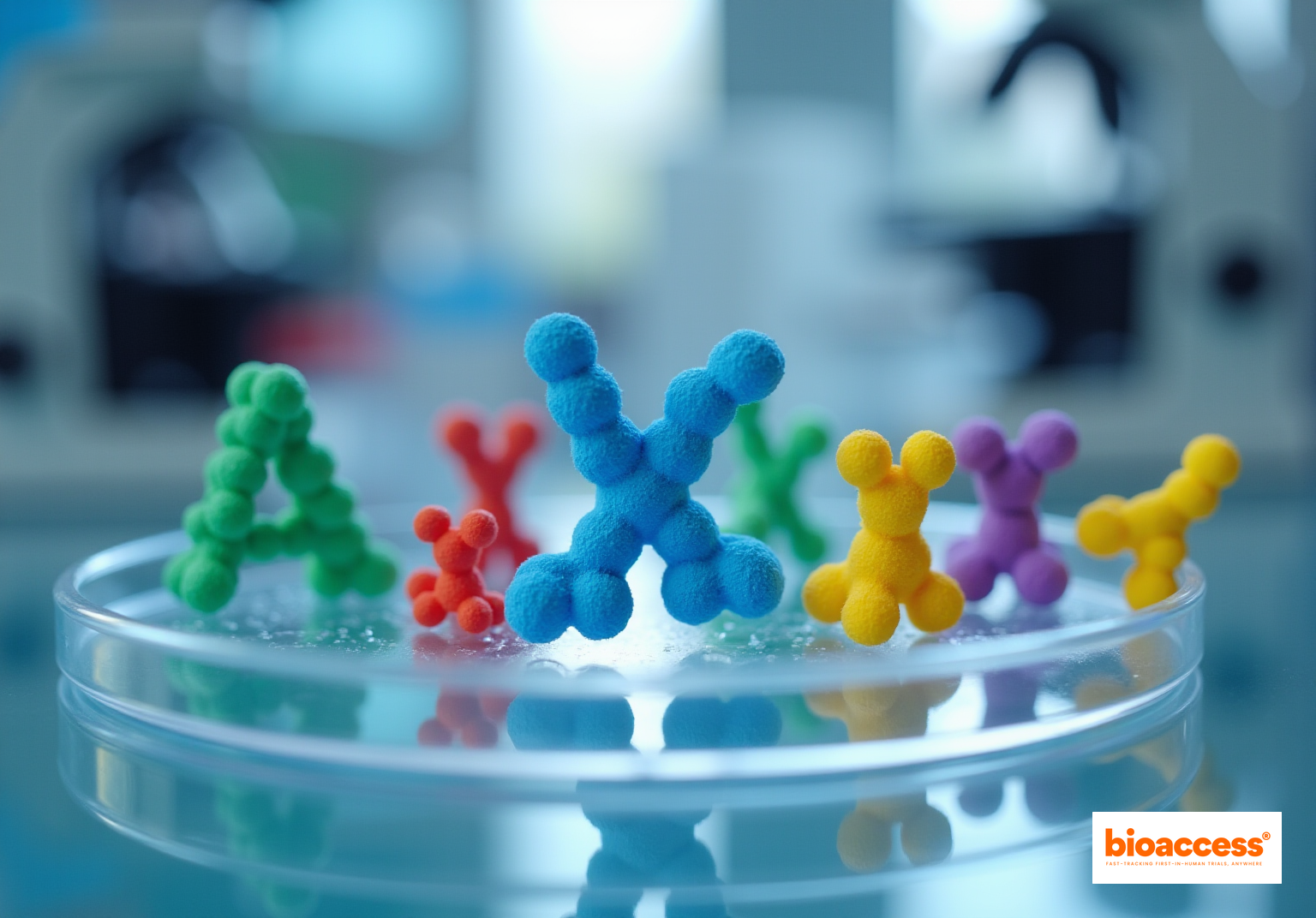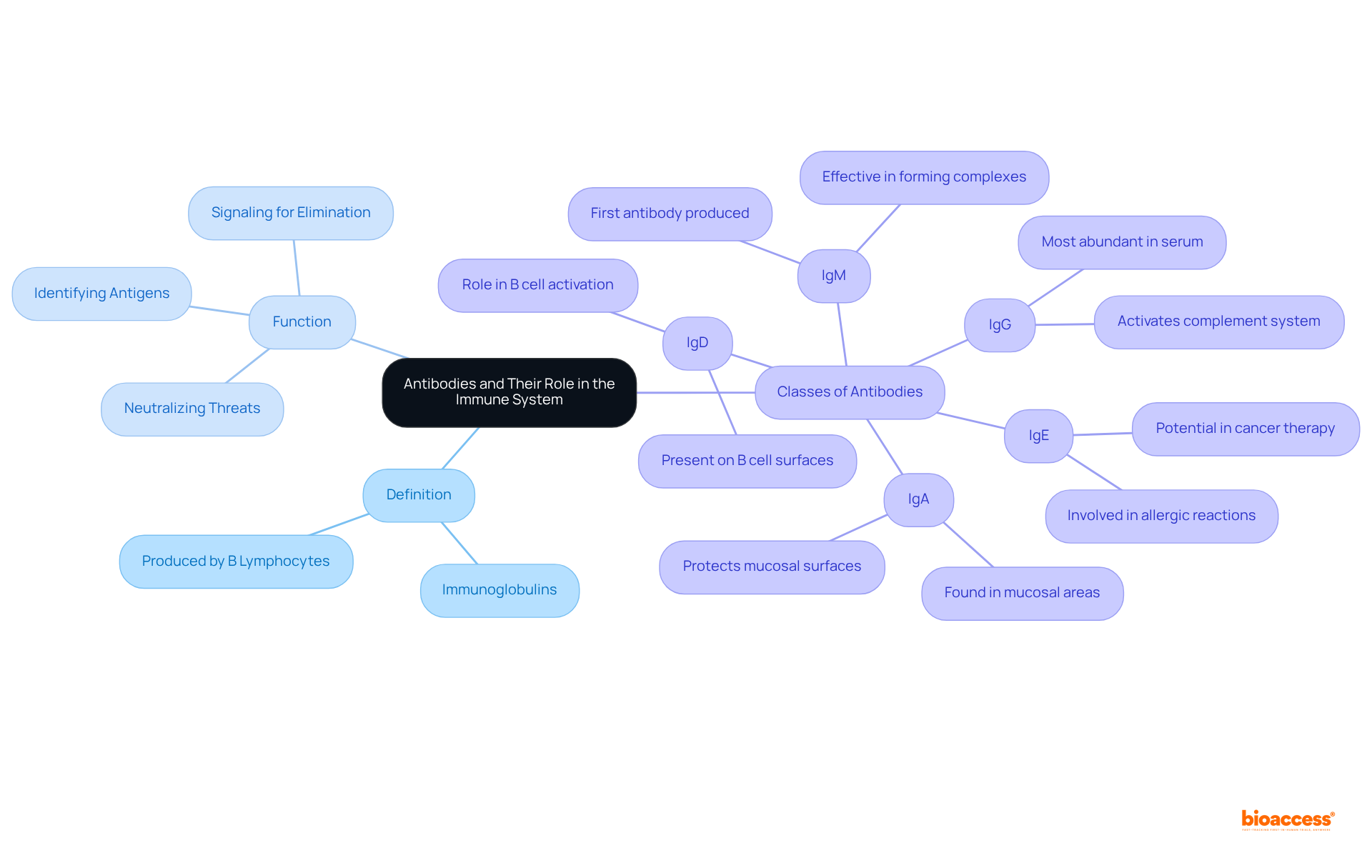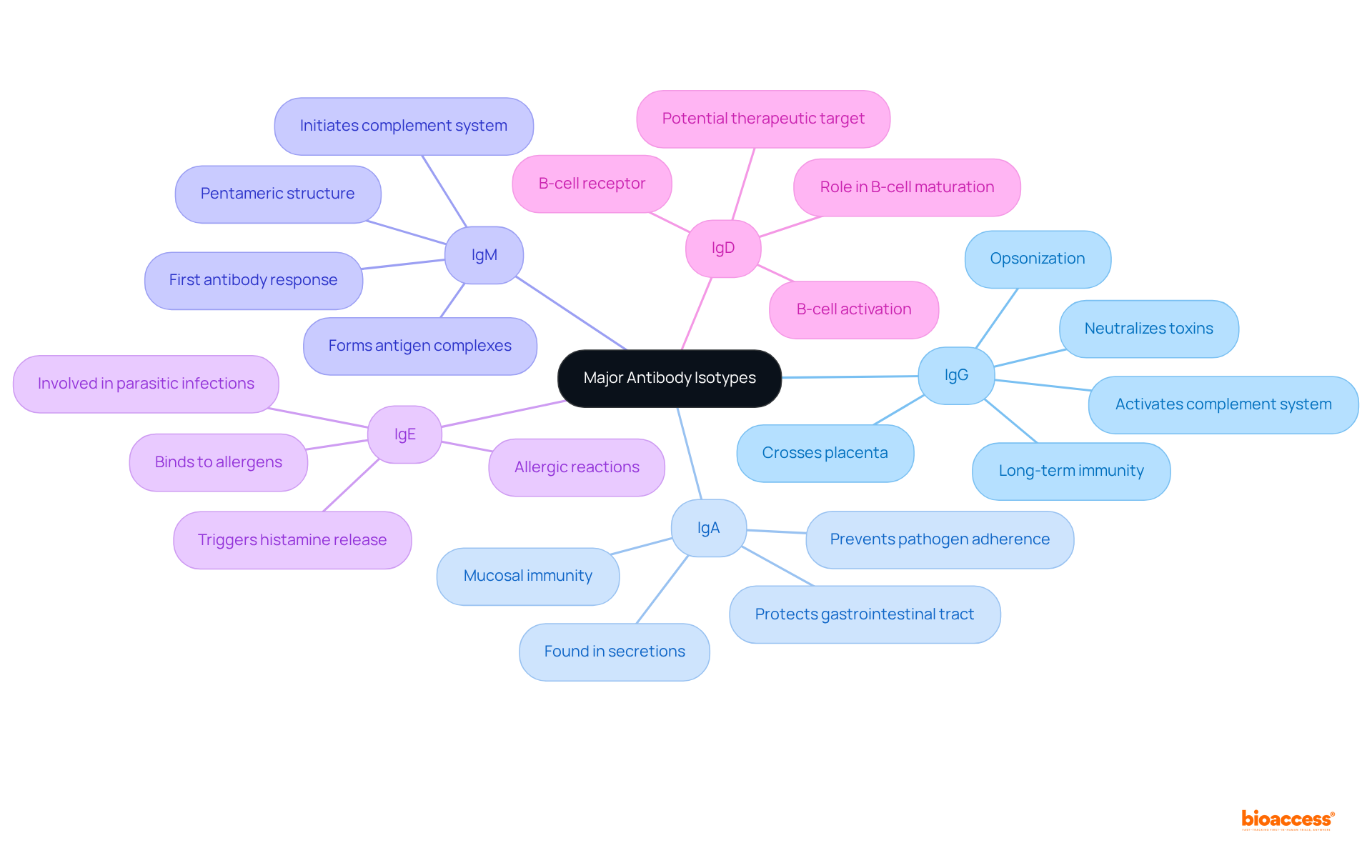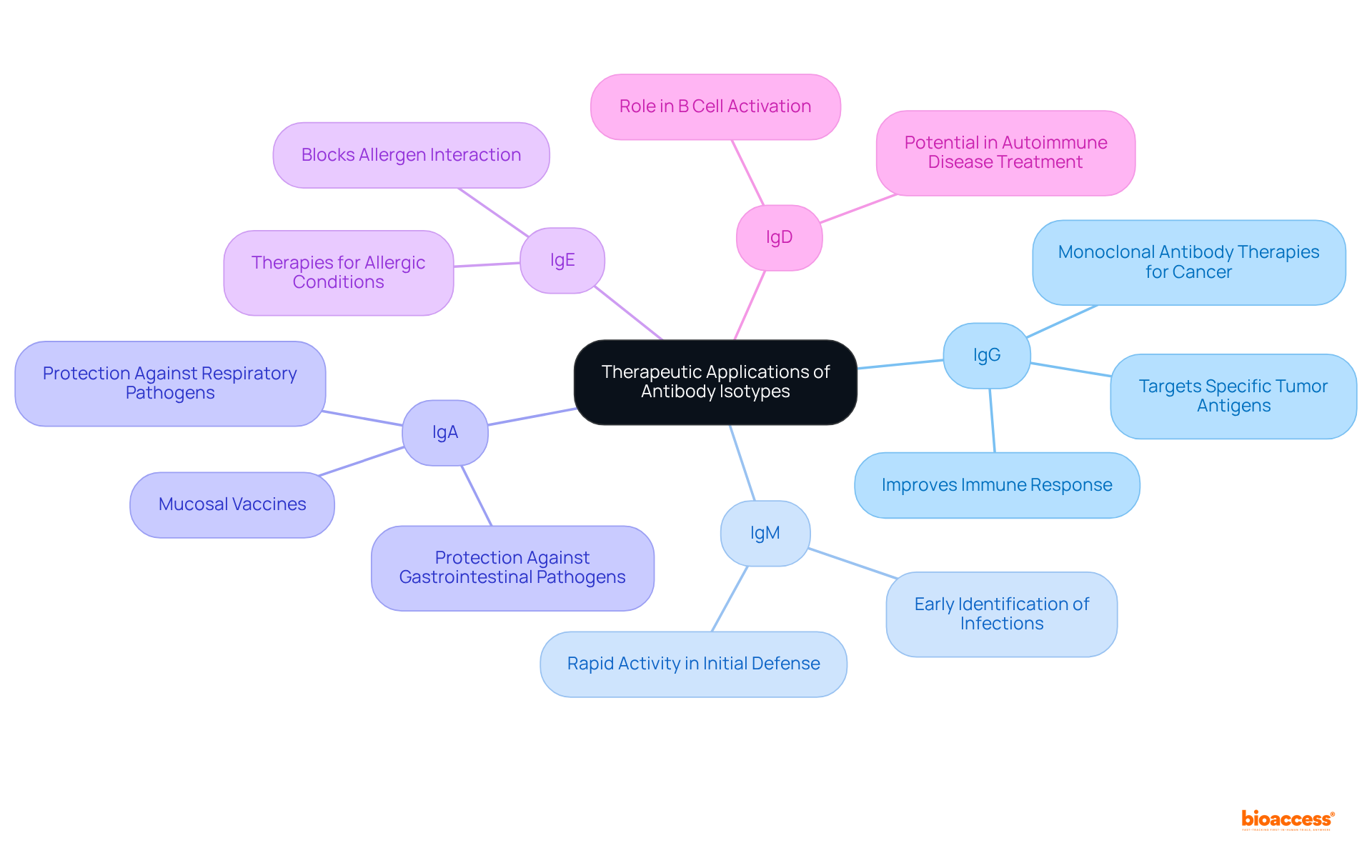


This article delves into the critical understanding of various isotypes of antibodies, exploring their distinct structures, functions, and therapeutic applications within the realm of clinical research. It emphasizes the pivotal role each isotype plays in immune response and treatment strategies, particularly highlighting IgG's application in cancer therapy and IgA's significance in mucosal vaccines. Such insights underscore the importance of these antibodies in enhancing patient care and driving advancements in medical research. By recognizing the unique contributions of each isotype, we can better appreciate their impact on therapeutic strategies and the broader Medtech landscape.
Antibodies, the body's frontline defenders against pathogens, represent more than mere proteins; they are intricate molecules with specialized roles that are essential for a robust immune response. A thorough understanding of the five major isotypes—IgG, IgA, IgM, IgE, and IgD—unveils a fascinating interplay of structure and function, which not only enhances immunity but also informs therapeutic applications.
As researchers delve deeper into the nuances of these isotypes, a pressing question emerges: how can the unique characteristics of each antibody type be harnessed to improve clinical outcomes in diseases ranging from cancer to allergies?
Antibodies, known as immunoglobulins, are specialized proteins produced by B lymphocytes in response to antigens, such as pathogens or foreign substances. They are vital to the defense system, playing a crucial role in identifying and neutralizing these threats. By attaching to specific antigens, antibodies signal them for elimination by other defense cells or mitigate their harmful effects. This process is essential for sustaining the body's defense against infections and diseases.
The five primary classes of antibodies—IgG, IgA, IgM, IgD, and IgE—are examples of isotypes of antibodies, each possessing distinct structures and functions that enhance the immune response in various ways, including activating complement systems and facilitating phagocytosis.

The five major antibody isotypes are critical components of the immune system, each serving distinct and vital functions:
IgG: As the most abundant antibody in the bloodstream, IgG is essential for long-term immunity. Its ability to cross the placenta provides passive immunity to the fetus, underscoring its significance. IgG is instrumental in opsonization, neutralizing toxins, and activating the complement system, establishing it as a cornerstone of the adaptive defense. By binding to bacteria and toxins, it plays a crucial role in the biological defense system.
IgA: Predominantly found in mucosal areas such as the gut and respiratory tract, as well as in secretions like saliva and breast milk, IgA is vital for mucosal immunity. It effectively prevents pathogen adherence and invasion, thereby protecting mucosal surfaces from infections. Recent findings indicate that IgA is one of the isotypes of antibodies, constituting 10-15% of total immunoglobulins in serum, which emphasizes its importance in defending against pathogens.
IgM: The first antibody generated in response to an infection, IgM is essential for forming complexes with antigens and initiating the complement system. Its pentameric structure, composed of five Y-shaped units, allows for strong attachment to pathogens, enhancing its efficiency during the initial immune response. IgM is one of the isotypes of antibodies and represents approximately 5% of serum immunoglobulins.
IgE: Primarily associated with allergic reactions and responses to parasitic infections, IgE binds to allergens and triggers histamine release from mast cells. This process leads to inflammation and other allergic symptoms. Despite being the least common immunoglobulin in serum, present at concentrations roughly 10,000 times lower than IgG, IgE plays a critical role in mediating hypersensitivity reactions.
IgD: Although its precise roles remain somewhat unclear, IgD is predominantly located on the surface of B lymphocytes. It contributes to the activation and differentiation of B lymphocytes, playing a role in the adaptive defense mechanism. Current studies are exploring its potential impact on B lymphocyte selection and homeostasis, suggesting it may serve as a therapeutic target for T lymphocyte-related diseases.

The therapeutic applications within clinical research, especially in oncology, immunology, and infectious diseases, are significantly influenced by the isotypes of antibodies. For instance, IgG is extensively utilized in monoclonal antibody therapies for cancer treatment. It targets specific tumor antigens, thereby enhancing the immune response against cancer cells. Recent advancements have led to the approval of multiple IgG-based therapies, significantly improving patient outcomes across various cancers.
IgM is currently under investigation for its potential in the early identification of infections, due to its rapid activity during the initial defense reaction. This positions IgM as a promising option for prompt diagnosis in urgent situations. Meanwhile, IgA is employed in mucosal vaccines, which aim to provoke a robust defense at mucosal surfaces, offering protection against respiratory and gastrointestinal pathogens. This approach is particularly pertinent as the demand for effective vaccines continues to rise.
Moreover, IgE therapies are being developed for allergic conditions, focusing on blocking the interaction between allergens and IgE to reduce allergic reactions. This innovative strategy seeks to provide relief for patients suffering from various allergies. Additionally, IgD is being explored for its role in B cell activation, which could pave the way for novel therapeutic strategies in autoimmune diseases. Understanding its function may unlock new avenues for treatment, ultimately enhancing patient care.
The strategic application of isotypes of antibodies not only deepens our understanding of immune responses but also fosters the development of innovative treatments that can significantly enhance patient care across multiple therapeutic areas. Furthermore, the therapeutic market for antibodies is projected to reach $534.26 billion by 2030, reflecting the growing interest and investment in this field. However, it is imperative to address the underrepresentation of pediatric populations in monoclonal antibody trials, as only 4% of trials included children aged 0-9 years. This raises concerns regarding the availability of age-appropriate safety and efficacy data.

Antibodies, or immunoglobulins, are fundamental components of the immune system, playing a pivotal role in identifying and neutralizing pathogens. Understanding the various isotypes of antibodies—IgG, IgA, IgM, IgE, and IgD—reveals their unique structures and functions that collectively enhance the body’s defense mechanisms. Each isotype contributes to different aspects of immunity, from providing long-term protection to mediating allergic responses, showcasing the complexity and sophistication of the immune response.
The article delves into the specific roles of each antibody isotype, emphasizing their importance in both natural immunity and therapeutic applications.
The therapeutic potential of these isotypes is further underscored by their applications in clinical research, particularly in oncology and immunology.
Recognizing the significance of antibody isotypes not only enhances understanding of immune responses but also drives innovation in treatment approaches. As research continues to evolve, the potential for antibody isotypes in developing effective therapies grows, promising improved patient outcomes across various diseases. It is essential for ongoing studies to address gaps, such as the representation of pediatric populations in clinical trials, ensuring that advancements in antibody therapies benefit all age groups. The future of immunology and therapeutic applications hinges on a deeper understanding of these vital proteins and their multifaceted roles in health and disease.
What are antibodies?
Antibodies, also known as immunoglobulins, are specialized proteins produced by B lymphocytes in response to antigens, such as pathogens or foreign substances.
What is the role of antibodies in the immune system?
Antibodies play a crucial role in identifying and neutralizing threats to the body, such as pathogens. They attach to specific antigens and signal them for elimination by other defense cells or mitigate their harmful effects.
How do antibodies contribute to the body's defense against infections and diseases?
Antibodies are essential for sustaining the body's defense system by identifying and neutralizing infections and diseases, thereby protecting the body from harmful substances.
What are the primary classes of antibodies?
The five primary classes of antibodies are IgG, IgA, IgM, IgD, and IgE.
Do different classes of antibodies have different functions?
Yes, each class of antibodies has distinct structures and functions that enhance the immune response in various ways, including activating complement systems and facilitating phagocytosis.